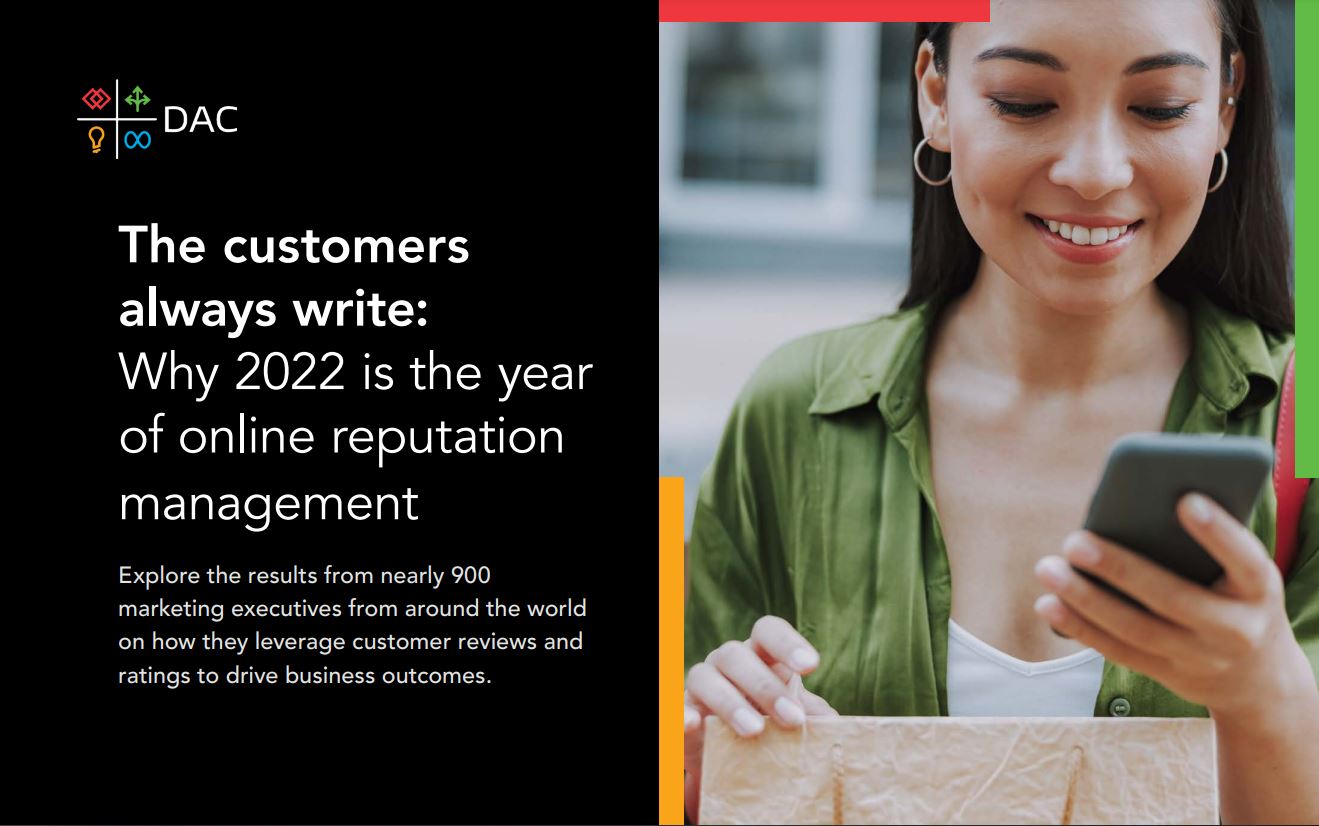When it comes to reputation management, customer reviews are everything. Not only are they free content and marketing for your brand, but they can also help increase search engine ranking, drive sales, and help build credibility for your company. But just like good reviews can create positive signals, bad reviews can bring you right back down.
Luckily, negative reviews play an important role and can actually be a good thing—as long as you handle them properly. Here are five ways you can use bad reviews to your advantage and improve your business in the long run.
-
Take them as an opportunity to interact with your customers
Consumers don’t want to feel like they’re yelling into a void if they leave a review, so responding to reviews—both good and bad—is an essential part of reputation management for any brand. If a customer is upset enough to leave a negative review, it’s your job to find a way to make it up to them. Empathetic, sincere responses can go a long way, both for the customer that left the original review and as an example to future customers as to what they can expect from you if they experience an issue.
Responding to all reviews can also be a lucrative habit to get into. According to one study, consumers spend 49% more with companies that respond to their reviews than those that don’t. Just be careful with how you use templated responses. If customers notice that you respond the same way to every two-star review, they’re going to get the impression you aren’t being genuine. Personalised responses can go a long way to increasing a sense of belonging and loyalty.
-
Use them to gain insight into how you can improve
Without critical feedback here and there, it can be harder to pinpoint where you need to focus your efforts to improve. Running a business involves keeping tabs on a lot of moving parts, so a bad review could be that squeaky wheel you need to focus your attention on and make much-needed changes.

For businesses with multiple locations, reviews can also be invaluable for understanding differences in the market. What works in one location might not be as effective somewhere else. You can also rely on reviews—good and bad—to get insight into how your staff is representing your brand and pinpoint any adjustments that need to be made.
-
Consider them a valuable source of information for your customers
Consumers who read reviews are looking for more information about a product or service before they buy. While they aren’t expecting perfection, they do expect authenticity. For example, a restaurant review might call out something like a lack of vegetarian options as a negative feature. If that’s a deal-breaker for a potential customer, the review has let them know your restaurant isn’t the right place for them. For other people, that particular detail won’t be a concern and it won’t affect their opinion of your business. Simply put, a lower review accompanied with comments is much more valuable than a perfect 5-star review without any comments.
Overall, a couple 2–4-star reviews can go a long way in building credibility for your business’s online presence. Less-than-perfect reviews tend to be more thoughtful and will often include specific pros and cons that may be helpful to other potential customers. A Trustpilot study found that over half of consumers believe that a less-than-perfect review is more authentic. Consumers appreciate hearing firsthand, unbiased experiences that can help them decide whether your business is right for them.
-
They give you a chance to get creative
Building a recognisable brand identity is about more than your website, logo, and product or service offering. It’s also about how you interact with customers and develop a voice that connects on a human level. There will always be irrational reviews, but rather than opting for a copy-and-paste response, it could be an opportunity to show there is a person behind the screen and social media presence. The Wendy’s Twitter account has become famous for doing just that.
But be careful—you want your response to an unfavourable review to go viral in a good way, not a bad way. Instead of simply apologising, come up with a strategy for turning a disgruntled customer into a loyal brand advocate. A discount code or a complimentary product or service can go a long way.
-
Unfair reviews can increase empathy for your brand
Not all bad reviews are reasonable. For example, if someone leaves a one-star review because your business didn’t deliver what they expected—even though your business was never intended to—that is considered an unfair review. They have judged you based on your ability to sell apples when you’ve only ever sold oranges.
A 2019 study found that consumers have an empathetic response to blatantly unfair reviews, which, in turn, may make them want to support your brand. Unfair reviews can also prompt the loyal customer base that you have built to leave a positive review to sing your praises and support you.
There’s no need to stress over a few bad reviews—they just prove you and your business are human. And that’s exactly what consumers are looking for.
Want to learn more about reputation management?
Learn how you can implement your own digital reputation management program, including how to respond to reviews. Our findings from a recent global study of nearly 900 marketing executives around the world uncovered some fascinating results—and it’s all yours for free.





